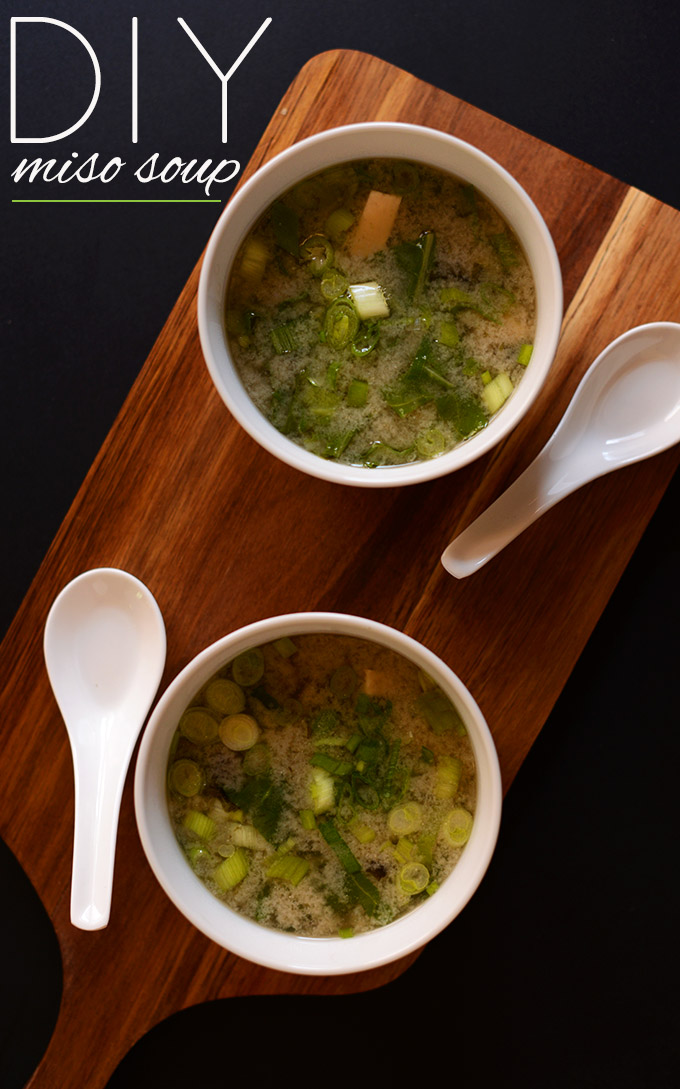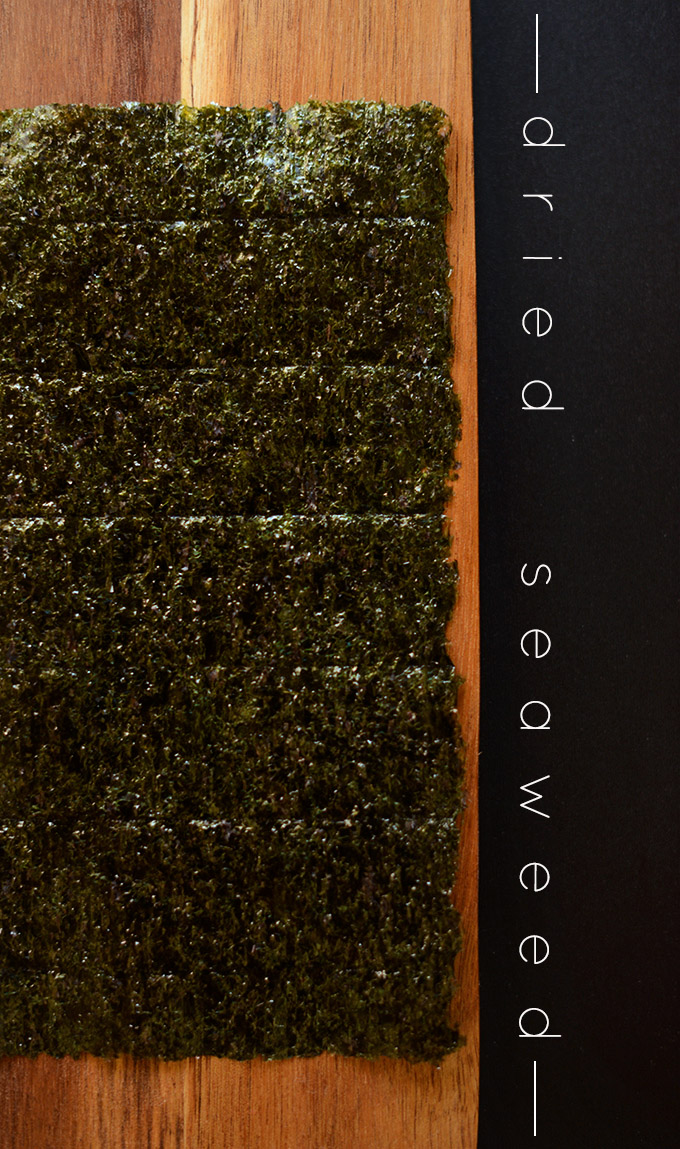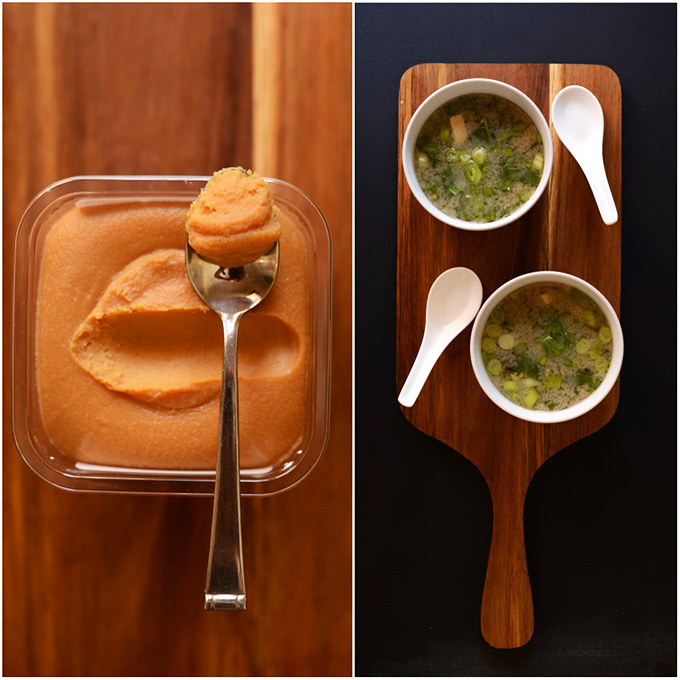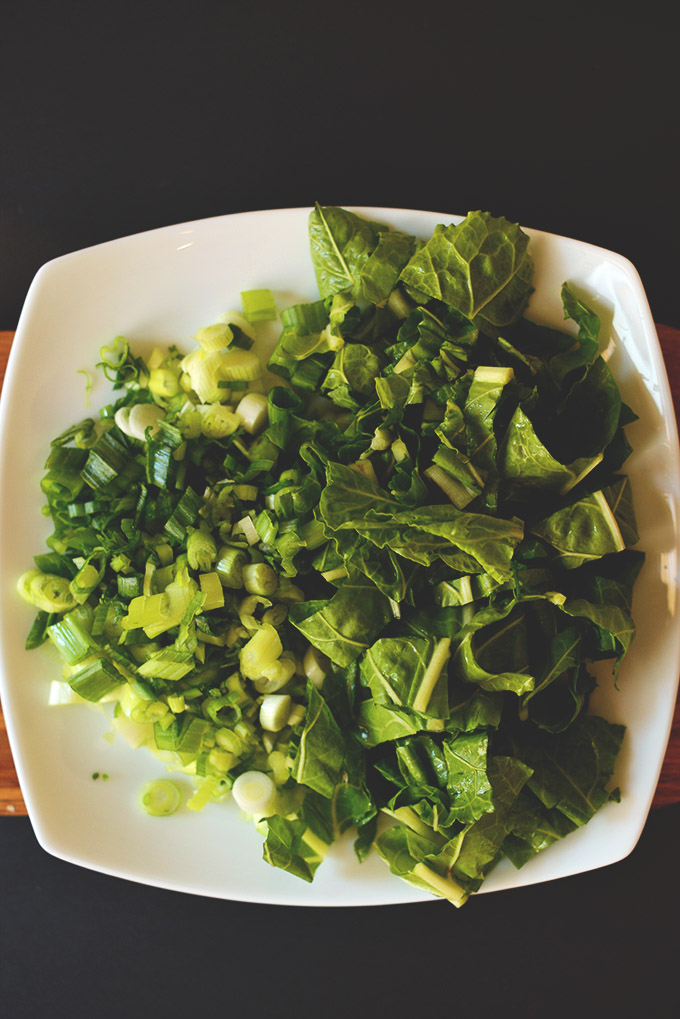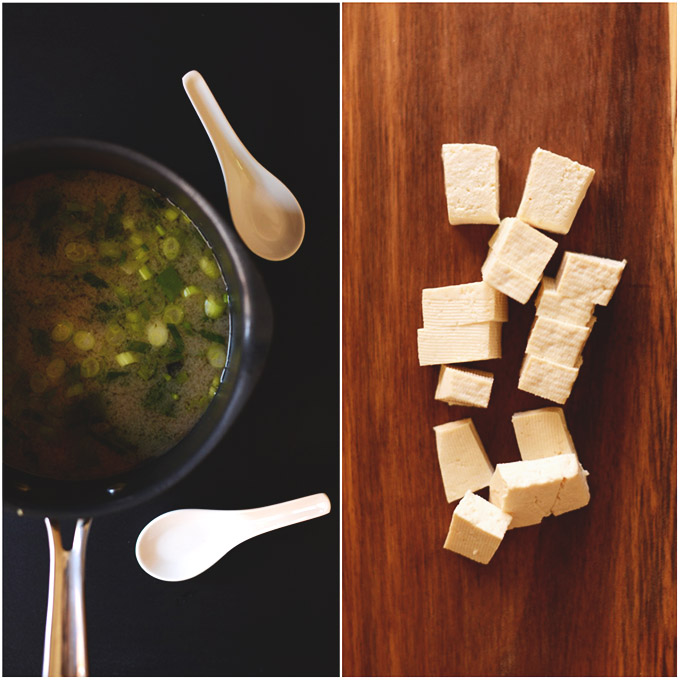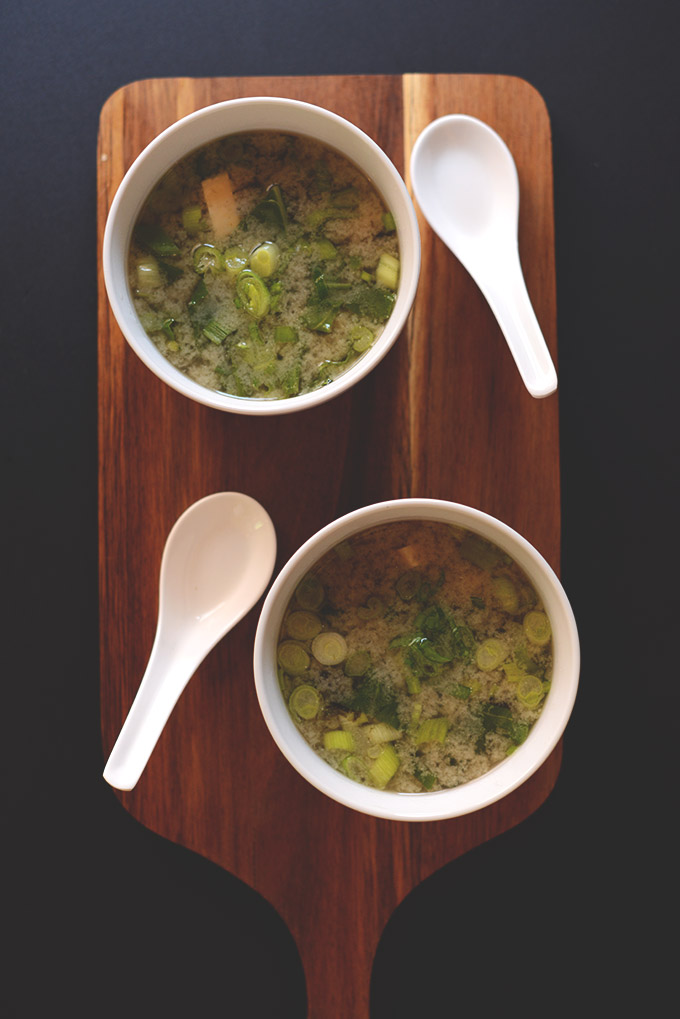Sticky rice, spicy salmon, fresh vegetables, fiery wasabi, and salty soy sauce. And don’t even get me started on pickled ginger. Wasabi + soy + ginger = flavor bomb. I can barely handle it. Needless to say, John and I have put sushi on heavy rotation in our eating out options. One of my favorite parts of going out for sushi is miso soup. It’s so warm and comforting and savory, with perfect little bites of tofu and seaweed in every scoop. Up until now I’ve reserved miso for times when we go out to eat. But when I was feeling a little under the weather recently, miso sounded soooo good to my achy stomach. That, along with a strong sushi craving, inspired me to create some of my own.
Origin of Miso Paste
The star of miso soup? Miso paste. Miso was believed to have originated in China and later introduced to Japan more than 1,300 years ago by Buddhist priests. It was made with fermented mixtures of salt, grains, and soybeans and used as a way to preserve food during warmer months. Miso has since became a staple in Japanese cuisine, and is made with a variety of ingredients including: Rice in the north, sweet white miso near the capitol of Kyoto, soy in the central Aichi prefecture, and barley in the south. (source) Miso is rich in minerals like zinc, copper, and manganese, as well as various B vitamins and vitamin K. Soy miso also contains phytonutrient antioxidants (source). And as a fermented food it also provides beneficial bacteria for the gut. Miso paste can be found in the refrigerated section of most grocery stores and Asian markets. It may seem like an obscure ingredient to buy just for soup, but it’s affordable, incredibly healthy, and can be used in many other recipes like soups, salad dressings, marinades, and many Asian-inspired dishes. So, I found it a worthy addition to my pantry.
What is Miso Soup?
Miso soup is a traditional Japanese soup made primarily of miso paste, dashi (broth), and additional ingredients such as vegetables, seaweed, and tofu.
How to Make Miso Soup
Traditionally, miso soup begins with a broth called “dashi,” made by soaking seaweed such as kombu in water and cooking with bonito flakes (flakes of dried fermented fish). Learn how to make your own here! However, ours is plant-based and made with vegetable broth, which is not traditional but it’s what we always have on hand.
How is This Recipe Different?
I wanted to keep my miso soup super simple and quick, but with a bit more emphasis on the greens. So I added some green chard and lots of green onion to the mix and couldn’t have been more pleased with the result! This soup is bursting with miso flavor and delivers the perfect amount of tofu and seaweed in each bite. And for veggie lovers like me, there’s more than a full serving of greens in each bowl. Be still my heart.
How to Make Miso Soup
This simple 15-minute, 1 pan version begins with heating the vegetable broth. The miso paste is whisked into a little hot water to get the clumps out. The result is a smooth and liquidy paste that gets added once the soup is removed from the heat. Set aside. Next the chard, green onion, nori, and tofu are cooked in the broth briefly. Then it’s time to remove from the heat, add in the miso, taste test, and adjust the saltiness. And that’s it! I see plenty of miso soup in our future. Consider this recipe our inspired version. Find a more traditional guide to miso soup here! We hope you LOVE this soup! It’s:SavoryComfortingFlavorfulCustomizable& Loaded with greens! Miso soup pairs perfectly with homemade sushi (you don’t even need a sushi mat) or Eggplant & Almond Butter Tofu Bowls.
More Miso Recipes
Crispy Miso Chickpea Bowls with Garlic Sesame Dressing Easy Vegan Ramen Easy Gochujang Sauce (Korean Chili Paste) Coconut Curry Ramen
If you try this recipe, let us know by leaving a comment, rating, and tagging a photo #minimalistbaker on Instagram! Cheers, friends.
